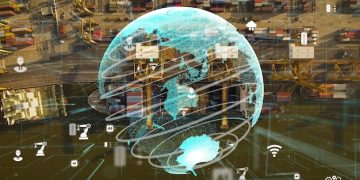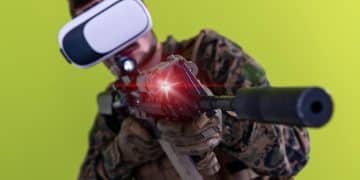3D Printing Revolutionizes Military Supply Chains: A 20% Lead Time Reduction
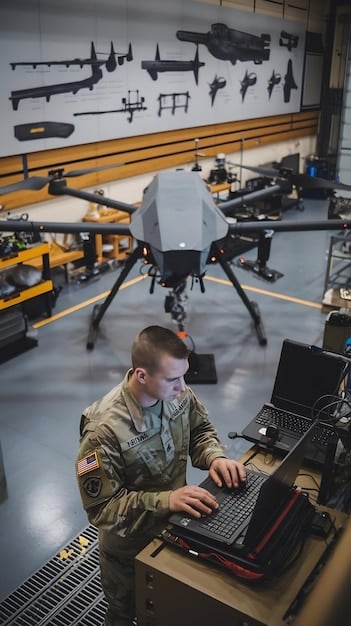
The Impact of 3D Printing on Military Supply Chains: Reducing Lead Times by 20% is transforming how the military operates, enabling faster production of customized parts, reducing dependence on traditional suppliers, and ultimately enhancing readiness and efficiency.
The battlefield of tomorrow demands agility, responsiveness, and innovation. The Impact of 3D Printing on Military Supply Chains: Reducing Lead Times by 20% is no longer a futuristic concept but a tangible reality reshaping how armed forces procure, produce, and deploy essential resources.
The Promise of Additive Manufacturing in Defense
Additive manufacturing, more commonly known as 3D printing, has emerged as a disruptive technology with the potential to revolutionize numerous industries. In the defense sector, its impact is particularly profound. By enabling the on-demand production of parts and components, 3D printing addresses critical challenges related to supply chain efficiency, customization, and cost-effectiveness.
This technology allows for the creation of complex geometries and intricate designs that are difficult or impossible to achieve using traditional manufacturing methods. This opens up new possibilities for creating lighter, stronger, and more efficient military equipment.
Enhanced Supply Chain Resilience
Traditional military supply chains are often long, complex, and vulnerable to disruption. Geographic distances, geopolitical instability, and reliance on a limited number of suppliers can create bottlenecks and delays. 3D printing offers a powerful solution by decentralizing production and enabling localized manufacturing capabilities.
Imagine a scenario where a forward operating base can produce critical spare parts on demand, eliminating the need to wait for shipments from distant suppliers. This enhanced resilience can be crucial in maintaining operational readiness in remote or contested environments.
Cost Reduction and Streamlined Logistics
The cost of maintaining a military supply chain can be astronomical, encompassing everything from procurement and storage to transportation and obsolescence management. 3D printing presents opportunities to significantly reduce these costs by minimizing waste, optimizing inventory, and shortening lead times.
- Reduced Material Waste: Additive manufacturing processes use only the material needed to create a part, minimizing waste compared to traditional subtractive manufacturing methods.
- Optimized Inventory: By printing parts on demand, the need for large inventories of spare parts is reduced, freeing up valuable storage space and resources.
- Lower Transportation Costs: Localized production reduces the need for long-distance transportation of goods, resulting in lower shipping costs and reduced carbon footprint.
In essence, 3D printing allows for a more agile, efficient, and sustainable military supply chain that is better equipped to meet the demands of modern warfare.
Quantifying the Impact: A 20% Reduction in Lead Times
While the potential benefits of 3D printing in military supply chains are clear, it is essential to quantify its impact in concrete terms. Studies and real-world applications have demonstrated that adopting 3D printing can lead to a significant reduction in lead times, often exceeding 20%. This improvement can have a transformative effect on operational readiness and mission success.
This reduction in lead times is achieved through a combination of factors, including faster prototyping, streamlined production processes, and the elimination of traditional manufacturing bottlenecks.
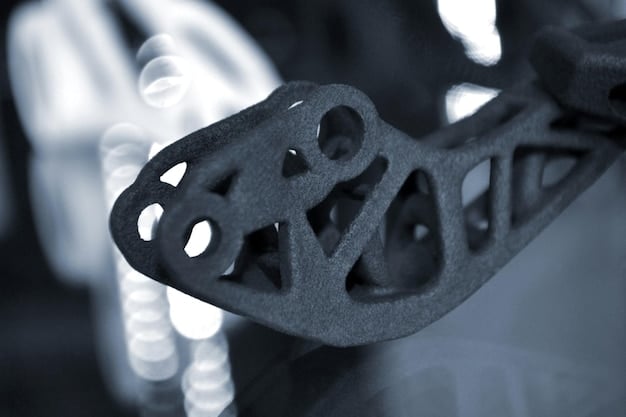
Accelerated Prototyping and Development
The ability to rapidly prototype and test new designs is crucial in the development of advanced military technologies. 3D printing allows engineers to iterate quickly, experiment with different materials and configurations, and refine their designs in a fraction of the time it would take using traditional methods.
This accelerated prototyping process not only speeds up the development cycle but also reduces the cost and risk associated with bringing new technologies to the field.
Case Study: On-Demand Production of Drone Components
A compelling example of the impact of 3D printing on military supply chains is the on-demand production of drone components. Unmanned aerial vehicles (UAVs) are playing an increasingly important role in modern warfare, providing reconnaissance, surveillance, and strike capabilities. However, maintaining a fleet of drones requires a reliable supply of spare parts.
- Reduced Downtime: By printing replacement parts on demand, the downtime associated with drone maintenance can be significantly reduced.
- Customized Solutions: 3D printing allows for the creation of customized drone components tailored to specific mission requirements.
- Enhanced Operational Flexibility: Forward operating bases can produce drone components in the field, eliminating the need to rely on external suppliers.
This case study demonstrates the tangible benefits of 3D printing in terms of reduced lead times, enhanced operational flexibility, and improved mission readiness.
Overcoming Challenges and Scaling Up 3D Printing in the Military
While the potential of 3D printing in military supply chains is undeniable, there are also challenges that must be addressed to fully realize its benefits. These challenges include ensuring quality control, addressing security concerns, and scaling up production capabilities.
Successful implementation requires a strategic approach that considers these factors and leverages the unique capabilities of additive manufacturing.
Ensuring Quality Control and Material Certification
The reliability and performance of military equipment are critical, and ensuring the quality of 3D-printed parts is paramount. Rigorous testing and certification processes are necessary to validate the mechanical properties and durability of 3D-printed components.
Material certification is also essential to ensure that the materials used in 3D printing meet the stringent requirements of military applications.
Addressing Security Concerns and Intellectual Property Protection
The decentralized nature of 3D printing raises concerns about security and intellectual property protection. Steps must be taken to prevent unauthorized access to design files and to ensure that 3D-printed parts are not counterfeited or tampered with.
Secure communication protocols, encryption technologies, and robust authentication methods are necessary to mitigate these risks.
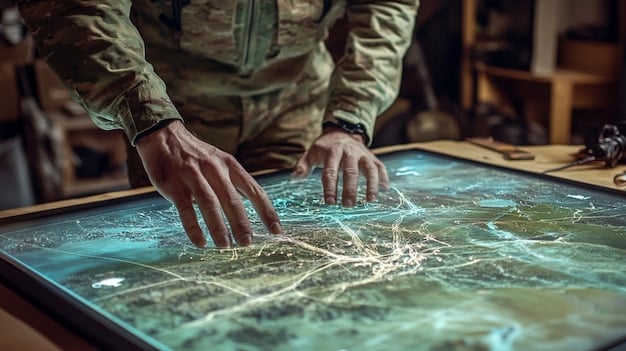
Scaling Up Production Capabilities and Workforce Development
To fully leverage the potential of 3D printing, the military must scale up its production capabilities and invest in workforce development. This includes acquiring the necessary equipment, training personnel in 3D printing technologies, and establishing partnerships with industry and academia.
A skilled workforce is essential to operate and maintain 3D printing equipment, design and optimize parts for additive manufacturing, and ensure the quality and reliability of 3D-printed components.
The Future of Military Logistics: A Vision of On-Demand Manufacturing
As 3D printing technology continues to evolve, its impact on military logistics will only grow. The future of military logistics envisions a decentralized network of on-demand manufacturing facilities capable of producing a wide range of parts and components, from simple tools to complex weapon systems.
This vision promises to transform the way the military operates, enabling faster response times, greater operational flexibility, and reduced reliance on traditional supply chains.
Predictive Maintenance and Proactive Supply Chain Management
The integration of 3D printing with predictive maintenance technologies will enable proactive supply chain management. By monitoring the performance of equipment and predicting potential failures, the military can proactively print replacement parts before they are needed, minimizing downtime and ensuring operational readiness.
This predictive approach will significantly improve the efficiency and effectiveness of military logistics.
Customized Solutions for Evolving Threats
The ability to rapidly design and produce customized solutions will be crucial in addressing evolving threats. 3D printing allows the military to adapt quickly to changing battlefield conditions and to develop new technologies and capabilities tailored to specific mission requirements.
This agility and responsiveness will be essential in maintaining a competitive edge in the future.
Collaboration and Innovation
The successful adoption of 3D printing in military supply chains requires collaboration and innovation. By working closely with industry, academia, and other government agencies, the military can leverage the latest advancements in additive manufacturing technology and develop innovative solutions to address its unique challenges.
This collaborative approach will accelerate the adoption of 3D printing and ensure that the military remains at the forefront of this transformative technology.
Policy Implications and Strategic Considerations
The integration of 3D printing into military supply chains has significant policy implications and strategic considerations. Governments must develop policies that support the adoption of 3D printing, promote innovation, and address security concerns.
A proactive approach to policy and strategy is essential to unlock the full potential of 3D printing in the defense sector.
Investing in Research and Development
Governments should invest in research and development to advance 3D printing technology and to develop new materials and processes for military applications. This investment will drive innovation and ensure that the military has access to the most advanced 3D printing capabilities.
A sustained commitment to research and development is crucial for maintaining a technological advantage.
Promoting Standardization and Interoperability
Standardization and interoperability are essential for ensuring that 3D-printed parts can be used across different platforms and systems. Governments should work with industry to develop standards for 3D printing materials, processes, and testing methods.
These standards will facilitate the widespread adoption of 3D printing and promote interoperability.
Addressing Ethical and Legal Considerations
The use of 3D printing in the military also raises ethical and legal considerations. Governments must address issues such as the potential for the unauthorized production of weapons, the impact on employment, and the liability for defective 3D-printed parts.
A thoughtful and comprehensive approach to these ethical and legal considerations is essential for ensuring responsible innovation.
| Key Aspect | Brief Description |
|---|---|
| 🚀 Reduced Lead Times | 3D printing enables faster part production. |
| 🛡️ Supply Chain Resilience | Localized production reduces reliance on distant suppliers. |
| 💰 Cost Savings | Minimized waste and optimized inventory reduce expenses. |
| 🛠️ Customization | Parts can be tailored to specific mission requirements. |
FAQ Section
▼
3D printing accelerates production by enabling on-site or near-site manufacturing, reducing reliance on traditional, lengthy supply chains. Parts are created as needed, speeding up repair, maintenance, and upgrades.
▼
Cost benefits include lower inventory costs due to on-demand production, reduced material waste because of precise printing, and decreased transportation expenses from localized manufacturing processes.
▼
Security involves protecting design files and printed parts from unauthorized access or alteration. Military agencies employ encryption, secure networks, and strict access controls to maintain integrity and confidentiality.
▼
Various materials are suitable, from polymers and composites to metals like titanium and aluminum. The choice depends on the part required, ensuring compatibility and performance for specialized applications.
▼
Future applications involve more sophisticated on-demand production, predictive maintenance, and customized solutions for emerging threats. This includes advanced materials, automated workflows, and enhanced integration into the entire military tech ecosystem.
Conclusion
In conclusion, 3D printing is poised to revolutionize military supply chains, offering significant benefits in terms of reduced lead times, enhanced resilience, and cost savings. However, realizing the full potential of this technology requires addressing challenges related to quality control, security, and scalability. By embracing innovation and fostering collaboration, the military can leverage 3D printing to create a more agile, efficient, and responsive logistics system.
